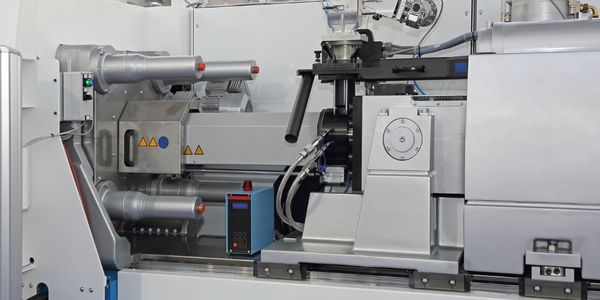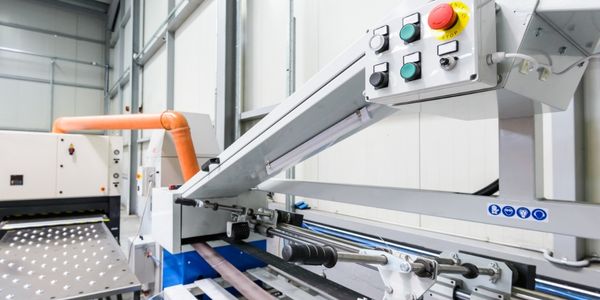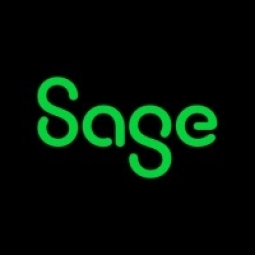Customer Company Size
SME
Region
- America
Country
- United States
Product
- Sage ERP X3
Tech Stack
- ERP
Implementation Scale
- Enterprise-wide Deployment
Impact Metrics
- Cost Savings
- Productivity Improvements
Technology Category
- Functional Applications - Enterprise Resource Planning Systems (ERP)
Applicable Functions
- Discrete Manufacturing
- Procurement
Use Cases
- Inventory Management
- Manufacturing System Automation
Services
- System Integration
About The Customer
S & S Hinge Company is a family-owned business that has been manufacturing industrial hinges for over 80 years. The company's products are used across many diverse sectors. Based in Bloomingdale, Illinois, S & S Hinge Company is a highly specialized industry player. To drive growth and profitability, the company continually seeks ways to boost efficiency, speed production, and lower costs. The company had hired Rich Sade, a vice president and COO, to modernize the company’s manufacturing efforts, primarily through the implementation of lean production practices. Sade is certified in Production/Inventory Control Management (CPIM) and holds an advanced degree in Industrial Management.
The Challenge
S & S Hinge Company, a family-owned industrial hinge manufacturer, was seeking ways to boost efficiency, speed production, and lower costs to drive growth and profitability. The company was using three disconnected applications to manage its accounting, manufacturing, and quoting tasks. This disjointed system was inefficient and did not support the company's lean manufacturing initiative. The company needed a single, integrated solution that could handle all these tasks seamlessly. The challenge was to find a solution that could replace the three legacy systems, streamline operations, and support the company's lean manufacturing objectives.
The Solution
After several months of mapping its own workflow, job tasks, and shopfloor operations and reviewing ERP packages, S & S Hinge Company selected Sage ERP X3 as the best solution to meet its needs. Sage ERP X3 was chosen for its comprehensive functionality and competitive pricing. The implementation of Sage ERP X3 allowed the company to eliminate the three legacy software systems it was previously using. The product configuration capabilities of Sage ERP X3 were a deciding factor in its selection. These capabilities allowed the company to vary its finished goods according to customer-specific requirements. The comprehensive cost-tracking functionality of Sage ERP X3 ensured that labor, material, and overhead costs were accurately accumulated and associated with each order. This led to more accurate pricing and the ability to identify potential problem areas in the production process.
Operational Impact
Quantitative Benefit

Case Study missing?
Start adding your own!
Register with your work email and create a new case study profile for your business.
Related Case Studies.

Case Study
Plastic Spoons Case study: Injection Moulding
In order to meet customer expectations by supplying a wide variety of packaging units, from 36 to 1000 spoons per package, a new production and packaging line needed to be built. DeSter wanted to achieve higher production capacity, lower cycle time and a high degree of operator friendliness with this new production line.

Case Study
Robot Saves Money and Time for US Custom Molding Company
Injection Technology (Itech) is a custom molder for a variety of clients that require precision plastic parts for such products as electric meter covers, dental appliance cases and spools. With 95 employees operating 23 molding machines in a 30,000 square foot plant, Itech wanted to reduce man hours and increase efficiency.

Case Study
Fully Automated Visual Inspection System
Tofflon has developed a fully automatic machine that uses light to inspect vials, medicine bottles, or infusion containers for glass fragments, aluminum particles, rubber grains, hairs, fibers, or other contaminants. It also detects damaged containers with cracks or inclusions (microscopic imperfections), automatically removing faulty or contaminated products. In order to cover all production processes for freeze-dried pharmaceuticals, Tofflon needed to create an open, consistent, and module-based automation concept.

Case Study
Hospital Inventory Management
The hospital supply chain team is responsible for ensuring that the right medical supplies are readily available to clinicians when and where needed, and to do so in the most efficient manner possible. However, many of the systems and processes in use at the cancer center for supply chain management were not best suited to support these goals. Barcoding technology, a commonly used method for inventory management of medical supplies, is labor intensive, time consuming, does not provide real-time visibility into inventory levels and can be prone to error. Consequently, the lack of accurate and real-time visibility into inventory levels across multiple supply rooms in multiple hospital facilities creates additional inefficiency in the system causing over-ordering, hoarding, and wasted supplies. Other sources of waste and cost were also identified as candidates for improvement. Existing systems and processes did not provide adequate security for high-cost inventory within the hospital, which was another driver of cost. A lack of visibility into expiration dates for supplies resulted in supplies being wasted due to past expiry dates. Storage of supplies was also a key consideration given the location of the cancer center’s facilities in a dense urban setting, where space is always at a premium. In order to address the challenges outlined above, the hospital sought a solution that would provide real-time inventory information with high levels of accuracy, reduce the level of manual effort required and enable data driven decision making to ensure that the right supplies were readily available to clinicians in the right location at the right time.

Case Study
SAP Leonardo Enabling Rocket Science
At times, ULA has as many as 15 different operating systems dedicated to overlapping processes, such as rocket design, testing, and launch. Multiple systems created unnecessary costs and unwanted confusion among workers at offices, factories, and launch sites in different location. In order to improve collaboration and transparency during vital activities that directly influence mission success, ULA wanted to improve data sharing and streamline manufacturing processes.




